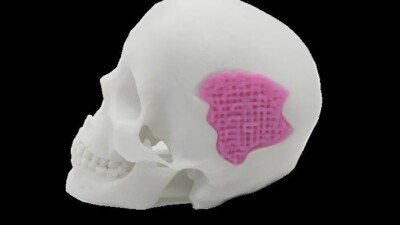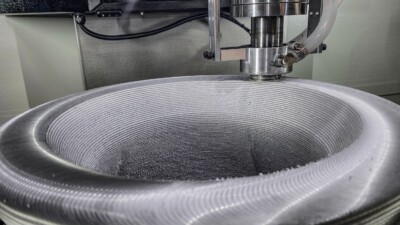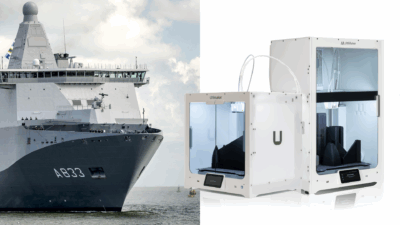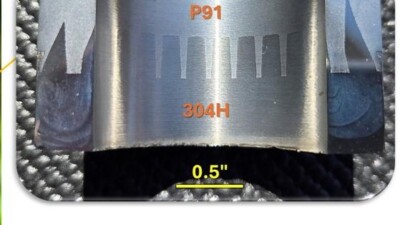Oak Ridge National Laboratory demonstrates polymer composite forms for casting concrete.
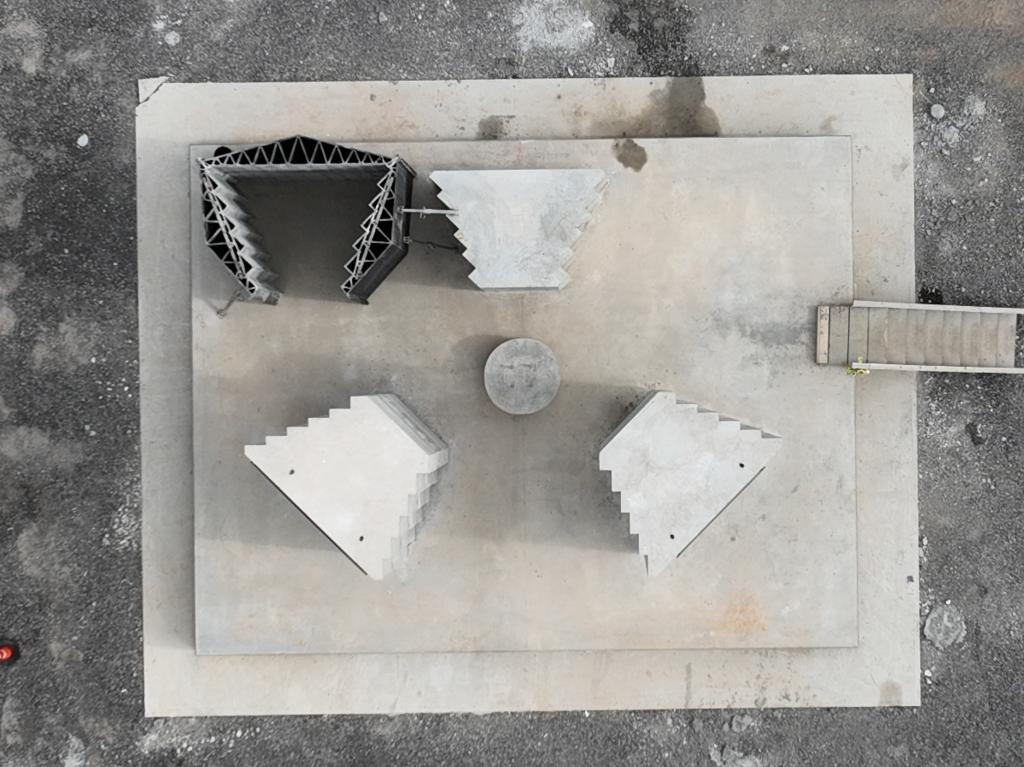
(Looking down on the Janus gate from above, the 3D-printed form is visible next to the concrete pillars arranged in a radiation symbol. IMAGE: Kairos Power)
Aside from some fairly specific use cases, the use of additive manufacturing (AM) in construction hasn’t exactly transformed the industry. But 3D printing buildings directly – such as Walmart’s expansion of an Athens, TN store or the more recent US Army barracks in Fort Bliss, TX – isn’t the only this technology can provide value to the construction industry.
In partnership with the nuclear engineering firm Kairos Power and Montana-based Barnard Construction, Oak Ridge National Laboratory (ORNL) has demonstrated how 3D printing can benefit construction indirectly, through large-scale polymer composite forms for casting concrete. This additive approach enables the construction of complex, highly precise concrete structures that would be technically challenging and prohibitive expensive to produce any other way.
Oak Ridge and its partners recently demonstrated and validated this approach via concrete forms for Kairo Power’s Hermes Low-Power Demonstration Reactor, specifically: Janus shielding columns, which are designed to absorb radiation. According to Oak Ridge, the composite forms dramatically cut down production timelines, enabling “cast-in-place” construction of complex structural components with unique geometries in days, rather than weeks.
“At ORNL, we’re showing that the future of nuclear construction doesn’t have to look like the past,” said Ryan Dehoff, director of the Manufacturing Demonstration Facility (MDF) in an ORNL press release. “We’re combining national lab capabilities with MDF’s legacy of taking big, ambitious swings — moonshots that turn bold ideas into practical solutions — to accelerate new commercial nuclear energy.”
“This project fits squarely into our iterative development approach,” said Kairos Power co-founder and CTO Edward Blandford in the same release. “By building and testing the molds for the columns first, we’re able to refine our methods, engage early with regulators, and reduce risk before we scale up the construction method for Hermes and future plants.”
Due to size and shape of the concrete structures, the 3D printed forms needed to be able to withstand significant pressure exerted by the concrete and maintain their structure integrity under high stress.
“We’re taking the best of additive manufacturing – modularity, flexibility, rapid iteration – and applying it to nuclear energy,” said Ahmed (Arabi) Hassen, group leader for composites innovation at MDF. “This project shows that we can break through old methods with new technologies that lower barriers, reduce risk, and accelerate construction timelines.”
Oak Ridge says it will continue to support Kairos Power’s construction initiatives over the next 18 months, expanding to include full-scale production of forms for radiation shielding and reactor building enclosures, as well as integrating smart manufacturing techniques, digital twins, and data-driven quality control. The partners aim to use printable biocomposite feedstocks derived from timber residuals, targeting a 75% reduction in material cost using domestic forest products.
